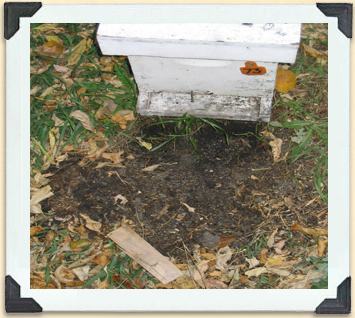The Keeper

Skunks scratch the earth by the hive entrance to draw the bees out so they can eat them.
© University of Manitoba
Predators
Bees and their honey are seen as a special treat for a few wild animals. Bears, racoons and skunks are among their most serious predators. To help protect them, beekeepers sometimes place electric or small mesh fencing around the hives.







